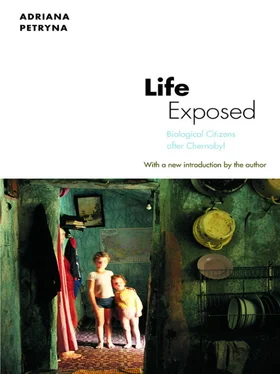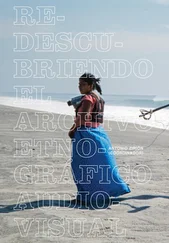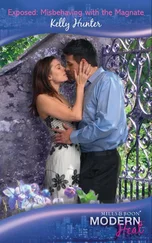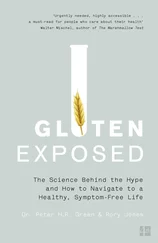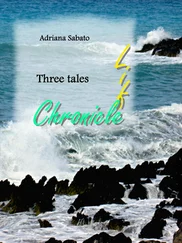Gale, Robert P., and Alexander Baranov. 2011. “If the Unlikely Becomes Likely: Medical Response to Nuclear Accidents.” Bulletin of the Atomic Scientists 67, no. 2:10–18.
Geertz, Clifford. 2005. “Very Bad News.” New York Review of Books , March 24.
Geras’kin, S. A., S. V. Fesenko, and R. M. Alexakhin. 2008. “Effects of Non-human Species Irradiation after the Chernobyl NPP Accident.” Environment International 34, no. 6:880–897.
Guterl, Fred. 2012. The Fate of the Species: Why the Human Race May Cause Its Own Extinction and How We Can Stop It . New York: Bloomsbury USA.
Human Consequences of the Chernobyl Nuclear Accident, A Strategy for Recovery: A Report Commissioned by UNDP and UNICEF with the support of UN-OCHA and WHO . 2002. http://chernobyl.undp.org/english/docs/strategy_for_recovery.pdf.
IAEA (International Atomic Energy Agency). 1991. The International Chernobyl Project: Assessment of Radiological Consequences and Evaluation of Protective Measures . Report by an International Advisory Committee. Vienna.
Jasanoff, Sheila. 2003. “Technologies of Humility: Citizen Participation in Governing Science.” Minerva 41:223–244.
Jobin, Paul. 2012. “Fukushima One Year On: Nuclear Workers and Citizens at Risk.” Asia-Pacific Journal 10, issue 13, no. 2.
Lubchenco, Jane. 2012. “Creative Solutions at the Interface of Science and Policy.” Taplin Environmental Lecture. Princeton Environmental Institute, Princeton University.
Meyer, Cordula. 2011. “Fukushima Workers Risk Radiation to Feed Families.” Spiegel Online . http://www.spiegel.de/international/world/.
Mousseau, Timothy A., and Anders P. Møller. 2011. “Landscape Portrait: A Look at the Impacts of Radioactive Contaminants on Chernobyl’s Wildlife.” Bulletin of the Atomic Scientists 67 , no. 2:38–46.
Mousseau, Timothy A., Neal Nelson, and V. Shestopalov. 2005. “Don’t Underestimate the Death Rate from Chernobyl.” Nature 437:1089.
Shimizu, Y., H. Kato, W. J. Schull, and D. G. Hoel. 1992. “Studies of the Mortality of A-bomb Survivors.” Radiation Research 130:249–266.
Socolow, Robert. 2011. “High-Consequence Outcomes and Internal Disagreements: Tell Us More, Please.” Climatic Change 108:775–790.
Tetlock, Philip, and Barbara Mellers. 2011. “Intelligent Management of Intelligence Agencies: Beyond Accountability Ping-pong.” American Psychologist 66 , no. 6:542–554.
Wada, K., T. Yoshikawa, T. Hayashi, and Y. Aizawa. 2012. “Emergency Response Technical Work at Fukushima Dai-ichi Nuclear Power Plant: Occupational Health Challenges Posed by the Nuclear Disaster.” Occupational and Environmental Medicine 69 , no. 8:599–602.
Williams, Dillwyn, and Keith Baverstock. 2006. “Chernobyl and the Future: Too Soon for a Final Diagnosis.” Nature 440, no. 7087:993–994.
World Health Organization. 2005. “Chernobyl: The True Scale of the Accident. 20 Years Later a UN Report Provides Definitive Answers and Ways to Repair Lives.” Press release. http://www.un.org/News/Press/docs/2005/dev2539.doc.htm.
World Health Organization. 2006. Health Effects of the Chernobyl Accident and Special Health Care Programmes .” Geneva: WHO.
I would like to first thank those who shared their thoughts and lives with me under very tough circumstances. Allowing me in as a participant-observer, they opened an unprecedented space for seeing and reflecting on difficult contemporary dilemmas that this book is about. Physicians, lawmakers, and civil servants among others were consistently generous with their time. I thank the late Heorhii Hotovshyts, the founding minister of the (then) Ministry of Chernobyl, without whose institutional support and direction I could not have carried out this work. I thank members of the Parliamentary Commissions on Chernobyl and on Human Rights, Ivan Los, Angelina Nyagu, as well as the late Valentyna Ferents and Professor Kindzelskyi, among the many scientists and administrators whose reflections helped clarify key issues. I am deeply grateful to the individuals and families who extended their hospitality to me while I was in Ukraine. I learned much from them. My work could not have been accomplished without several distinguished teachers. Paul Rabinow offered generous guidance and the tools for actualizing this work. Nancy Scheper-Hughes provided critical insight and direction from the beginning. Other teachers to whom I am grateful for engagement throughout the years at Berkeley include Dell Upton, Stefania Pandolfo, Lawrence Cohen, Yuri Slezkine, and Anthony Dubovsky. I thank Rayna Rapp and Mark von Hagen whose careful review, comments, and criticisms of the manuscript were essential to its final rewriting. A number of individuals offered clarity on things technical and ethical, including Ronald Jensen, James Ellis, Tom Sullivan, Frank Von Hippel, Burt Singer, Naomar de Almeida-Filho, Valerii Tereshchenko, Guilherme Streb, Maria Pilinskaya, Zhanna Minchenko, Aloke Chatterjee, Leon Trilling, Volodymyr Husatenko, Natalia Baranovska, Mark Petryna, Marilyn Pogensee, and Andrew Bazarko. I thank the intellectual community of Harvard University’s Department of Social Medicine. I am particularly thankful to Arthur Klein-man, with whom I had the privilege of working, and Joan Kleinman. I am also very grateful to Byron Good and Mary-Jo Good. Michael Fischer and colleagues at MIT’s Program in Science, Technology, and Society, among them Joseph Dumit, Hannah Landecker, Chris Kelty, Kaushik Sunder Rajan, and Aslihan Sanal brought meaningful insights to this work. Other friends and colleagues from whom I have benefited greatly are Greg Castillo, Natasha Schull, Corinne Hayden, Marianne DeLaet, Joseph Masco, Mariana Ferreira, Ricardo Ventura Santos, Clara Han, Kathy Mooney, David Eaton, and Michele Rivkin-Fish. I am especially grateful to Bruce Grant and Cathy Wanner who read the entire manuscript and offered important comments and criticisms. For their support, I thank colleagues in Anthropology and the Graduate Faculty of Political and Social Science at the New School and at Lang College and its undergraduate program in Science, Technology, and Society. I also thank colleagues at the University of California, Irvine, who engaged this work. Students in my graduate and undergraduate anthropology of science and medical anthropology seminars, including Maurizio Albahari, Amanda Moore, Simanti Dasgupta, and Sarah Orndorff provided helpful readings. This book and parts of it have traveled with me for some time to conferences, as lectures, and to workshops. I thank the organizers and participants of several events that helped to sharpen the ideas here, particularly the Conference on the Discourses of Genocide at the University of California, San Diego; the Workshop on Travel, Fact, Media at the Wissenschaftskolleg, Berlin; the Seminar on the Anthropology of Science and Medicine at the California Institute of Technology; the Notestein Seminar of the Office of Population Research, Princeton University; and the Science Studies and Anthropology Workshop at the University of Chicago.
Several institutions have supported my endeavors, from graduate training, to field research, the writing of the dissertation, and the writing of this book. They include the Joint Committee on the Soviet Union and Its Successor States of the Social Science Research Council (SSRC), Graduate Training Fellowship; the MacArthur Interdisciplinary Group, Breadth Fellowship; International Researches and Exchanges Board (IREX), Individual Advanced Research Opportunities; Fulbright-Hays Doctoral Dissertation Research Abroad Program (DDRA); Social Science Research Council, Eurasia Program Dissertation Fellowship; and the John D. and Catherine T. MacArthur Program on Global Security and Sustainability Research and Writing Grant.
Читать дальше
